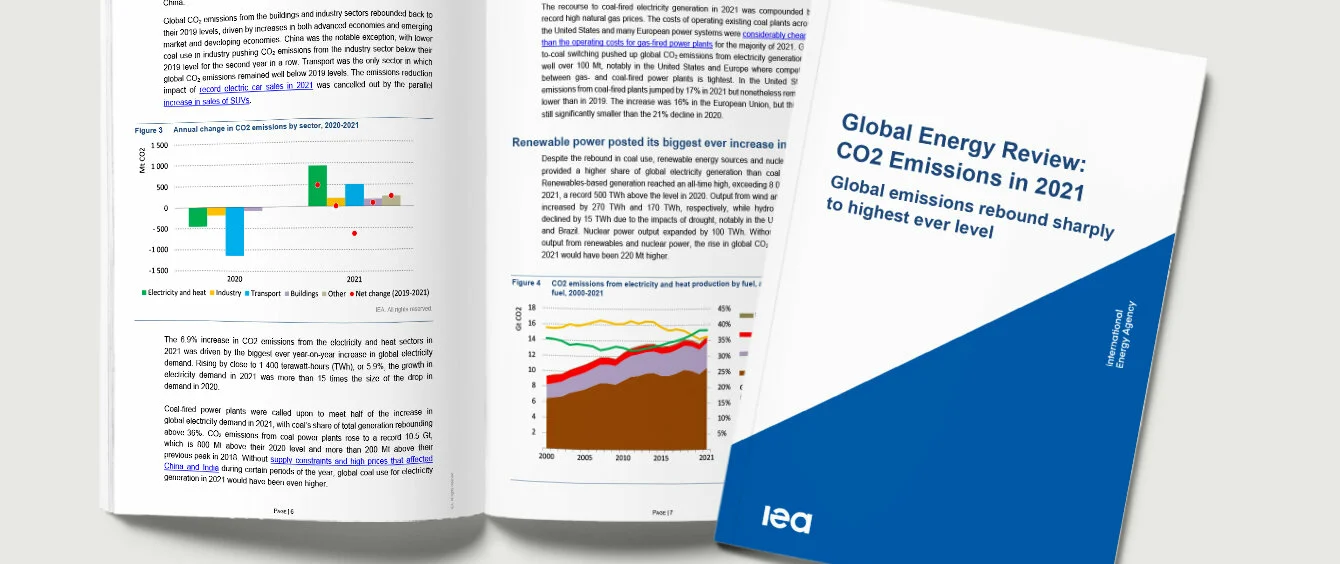Despite record levels of renewable energy generation, global energy-related carbon dioxide (CO2) emissions in 2021 reached their highest-ever level of 40.8 gigatonnes (Gt), 36.3 Gt of which were the result of energy combustion and industrial processes.
The International Energy Agency’s (IEA) report Global Energy Review: CO2 Emissions in 2021, published in March, shows these latter emissions rising by 6% last year.
The increase reflects the recovery of the global economy from the worst effects of the Covid-19 pandemic. The rise in energy-related carbon emissions was closely correlated with a 5.9% increase in global economic output, indicating the strongest link since 2010 between economic growth and rising carbon emissions.
Recourse to coal
Despite being the primary focus of decarbonisation, electricity sector emissions reached a level close to 14.6 Gt. Underlying this was a huge 1,400 TWh jump in electricity demand, more than 15 times the size of the drop in 2020.
Renewable energy generation rose a record 500 TWh above 2020 levels, the majority provided by wind (270 TWh), followed by solar (170 TWh). Nuclear output increased by 100 TWh. Together, higher renewable and nuclear generation reduced global CO2 emissions by 220 megatonnes (Mt), the IEA estimates, but the increase was insufficient to prevent higher fossil fuel use.
Significantly, booming power demand and high gas prices contributed to an increase in coal burn. Emissions from coal-fired power generation in the EU increased by 16% last year, while in the US they rose by 17%, but were still lower than in 2019, while EU coal emissions from power generation remained below 2020 levels.
China: rise in electricity demand
China, the only major economy to grow between 2019 and 2021, accounted for almost all of the global increase in electricity and heat sector emissions in this period.
China saw its largest ever rise in electricity demand last year of almost 700 TWh, which overwhelmed the country’s efforts to increase low carbon power supply, forcing a recourse to coal generation. China’s electricity generation from renewables neared 2,500 TWh in 2021, 28% of the country’s total power supply.
Globally, coal-related emissions rose to an all-time high of 15.3 Gt, about two-thirds of which came from coal use in the power sector. Coal use more broadly accounted for 40% of the overall growth in emissions last year.
Sustainable recovery?
The IEA’s data show that the post-pandemic economic recovery has not been as sustainable as it had hoped, although some recovery measures will have greater emissions mitigation impacts in coming years.
The agency estimates that recovery measures for the period 2021-2023 should mobilise about $400 billion a year in clean energy and sustainable recovery investment. However, this represents only 40% of that required by its sustainable recovery plan, which would put the world on track for net zero emissions by 2050.
According to the IEA, sustainable investments need to rise and clean energy deployment accelerate to ensure that the global rebound in CO2 emissions last year proves a one-off event.
